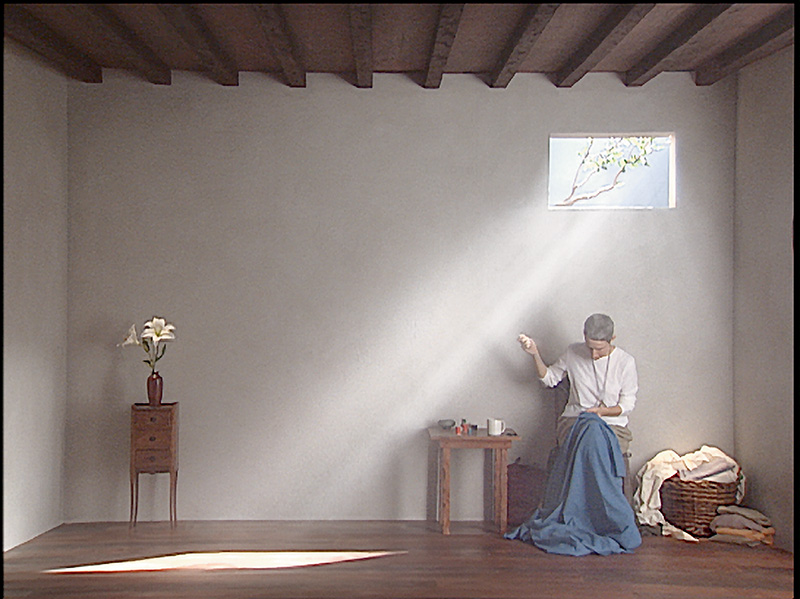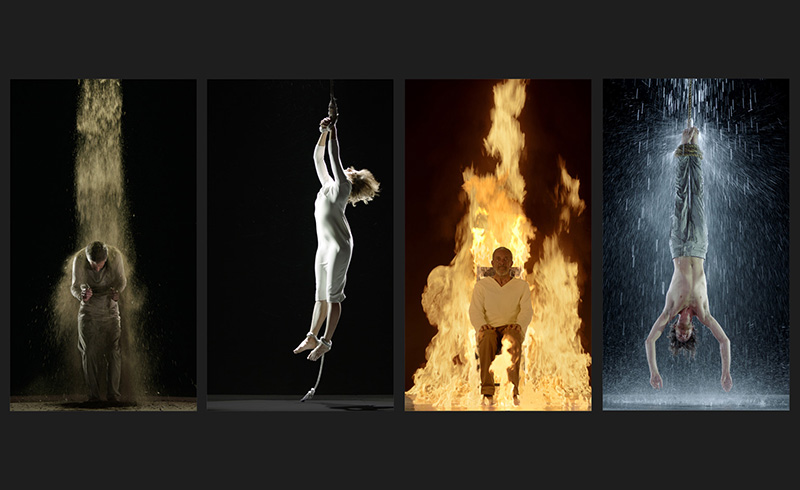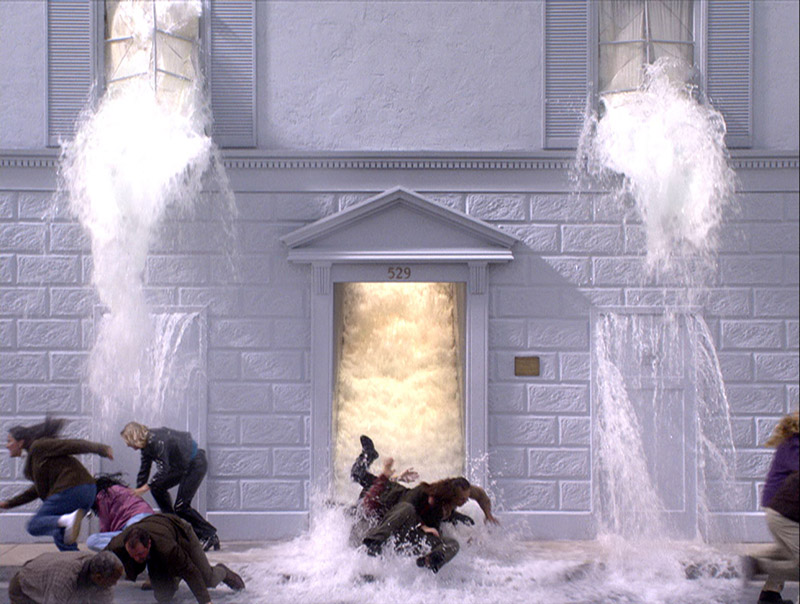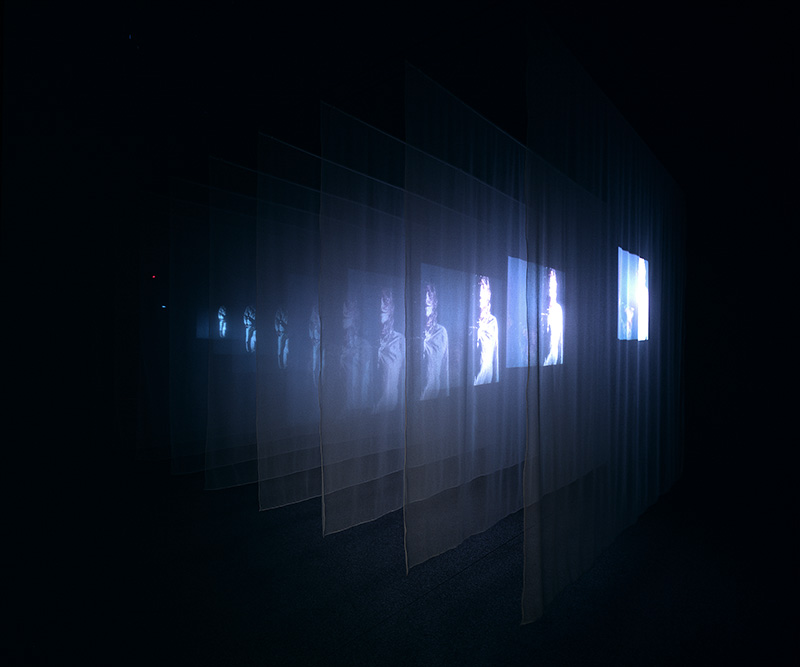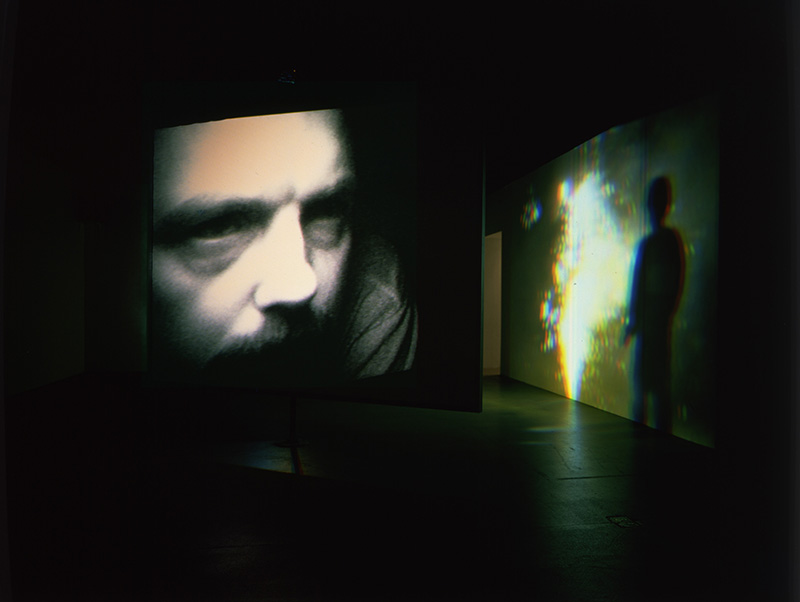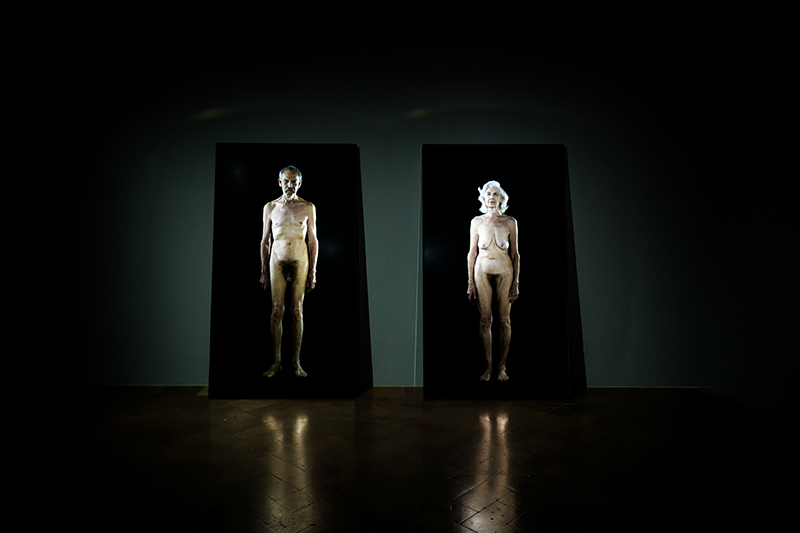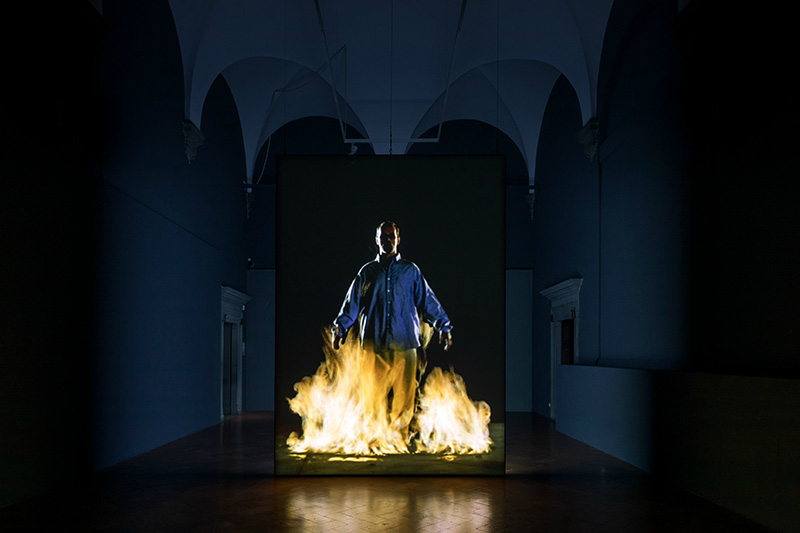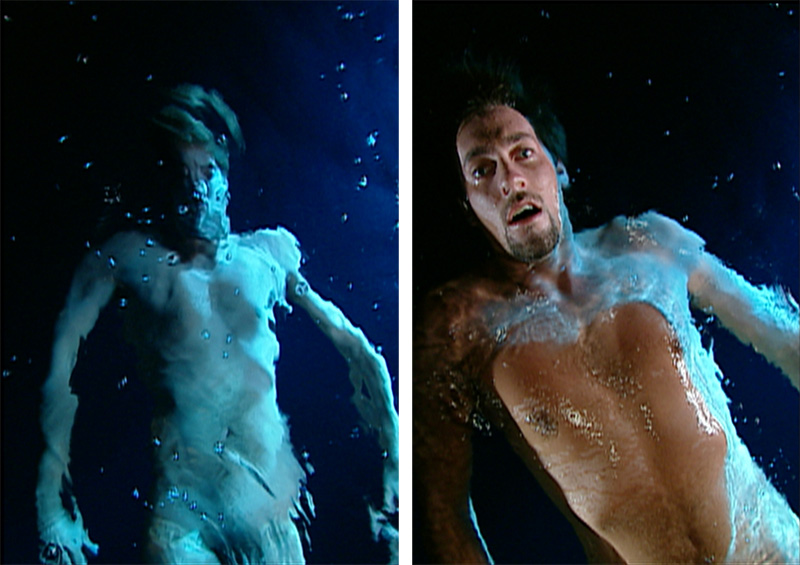TRACES: Bill Viola
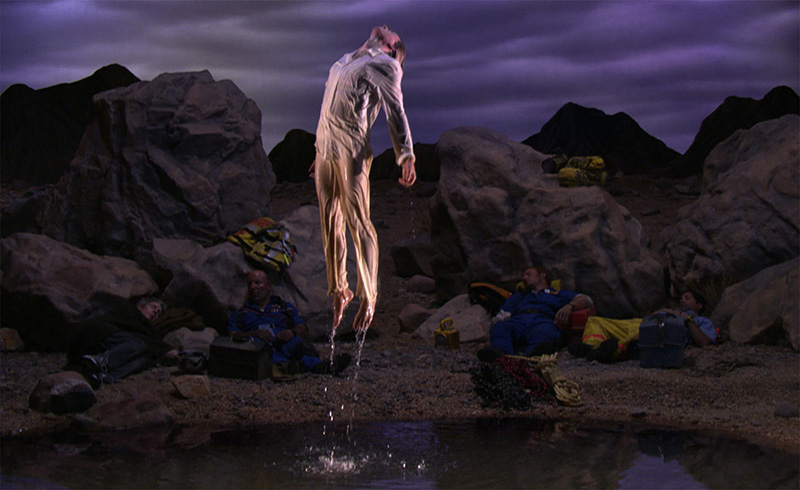 Today is the occasion to bear in mind Bill Viola (25/1/1951- ), one of the pioneering figures of a generation of artists in the ‘70s employing video art and sound technologies. Known for his room-sized installations that envelop viewers with sound and feature multiple screens of moving images, Viola created sublimely romantic imagery in the tradition of painting but with radically new digital media. This column is a Tribute to artists, living or dead, who have left their mark in Contemporary Art. Through documents or Interviews, starting with: moments and memories, we reveal out from the past-unknown sides of big personalities, who left their indelible traces in time and history…
Today is the occasion to bear in mind Bill Viola (25/1/1951- ), one of the pioneering figures of a generation of artists in the ‘70s employing video art and sound technologies. Known for his room-sized installations that envelop viewers with sound and feature multiple screens of moving images, Viola created sublimely romantic imagery in the tradition of painting but with radically new digital media. This column is a Tribute to artists, living or dead, who have left their mark in Contemporary Art. Through documents or Interviews, starting with: moments and memories, we reveal out from the past-unknown sides of big personalities, who left their indelible traces in time and history…
By Dimitris Lempesis
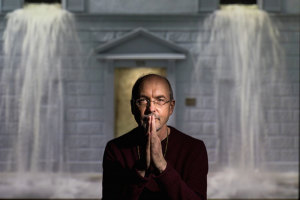 William “Bill” Viola was born and grew up in Queens, New York. He was a very shy, introverted child and found his internal world far more interesting and engaging than his external world of friends and family. When Viola was six years old, he had a experience, which deeply affected his life: he fell from a raft on which he had been playing with his cousins and sunk deep into the lake waters below. While submerged, he opened his eyes and observed the beautiful shafts of light coming down through the water, illuminating the organisms floating beneath the surface of the lake. In 1969, when Viola was in high school, a generous donor presented a Sony Portapak video camera to the school providing him with an introduction to the medium to which he would devote his artistic career. After graduating from high school, Viola enrolled at Syracuse University in New York. At Syracuse, Viola had access to all the latest electronic equipment, as well as professors who were at the cutting edge of these new technologies. He knew that most art schools had very limited budgets and he would not have had the opportunity to explore video as an emerging artistic medium. It was at that time that he produced his first video artworks. Most significantly, in 1972 he created “Tape I”. The video featured Viola’s reflection in a mirror; he is looking down the lens just before uttering a blood-curdling scream, after which he destroys the image by placing a finger inside of the tape spool. In 1973, Viola received his BFA after having completed his studies in the Experimental Studios of the College of Visual and Performing Arts, including the experimental program, Synapse, which eventually become Citrus TV. He then went to work at the Everson Museum of Art in Syracuse as an audio-visual technician in the museum’s new video department. There he studied with David Tudor, the modernist composer who had at one point worked with John Cage. Starting in 1973 and extending until 1980, he performed repeatedly with the Avant-Garde composer David Tudor. From 1974 to 1976, Viola lived in Florence, Italy and worked as the technical director of production for one of Europe’s first video art studios, Art/Tapes/22. There he met and worked with Richard Serra as well as other video artists, including Vito Acconci, Nam June Paik, and Bruce Nauman. Following his stay in Florence, Viola went on to travel studying and recording the traditional arts, especially the performing arts of Java, Bali, the Solomon Islands, and Japan. In 1976, he returned to New York to serve as the artist-in-residence at the WNET Channel 13 Television Laboratory, where he remained until 1980 and produced a series of video works that premiered on television. Having begun receiving recognition for his work, in 1977, Viola was invited to present his video work by the director of cultural arts, Kira Perov, at La Trobe University in Melbourne, Australia. Perov and Viola began a romantic relationship and a year later she joined him in New York. They eventually married and had two children. The couple traveled to the Sahara Desert in Tunisia in 1979 to make video recordings of mirages. In 1980, Viola was selected for a U.S./Japan Creative Artist Fellowship so he and Perov relocated to Japan, where they remained for a year and a half. During his residence in Japan Viola also studied Zen Buddhism with Master Daien Tanaka. Significantly, he was also the first person to serve as artist in residence at the Atsugi research laboratories at the Sony Corporation. Once the fellowship in Japan ended in 1981, Viola and Perov returned to the United States, and made their home in Long Beach, California. It was an extremely fertile creative period, albeit distinguished by a broad range of experimentation. In 1983, he had become increasingly dissatisfied with the work he was producing. For two years he struggled to continue producing his video art. Then, in 1988, Viola and Perov’s first son was born and simultaneously his mother suddenly fell ill. She died a few years later, in 1991, right around the time that the couple’s second son was born. Those two coinciding events affected Viola in a profound way and ultimately sparked a new period of artistic creativity and deepened spirituality. His focus turned to sorting through home videos and using them to produce some of his most important work of the period, video pieces that focused on the subjects of life and death. A video he produced during that period following his mother’s death, “Nantes Triptych” (1992), which was eventually purchased by the Tate, features images of Viola’s dying mother as well as a man underwater and a woman in labor. Viola represented the United States in 1995 at the 46th Venice Biennale, where he presented his video series titled “Buried Secrets”. His 2002 work, “Going Forth By Day” took the form of a digital “fresco” cycle that explored the “cycles of human existence – birth, death and rebirth – through the different phases in each video with audio accompaniment”. Throughout the 2000s, Viola has continued to exhibit around the world and, as of 2014, a number of his works including “Eternal Return” (2000) and “Witness” (2001) rank in the top five highest selling video artworks to date. Most recently, Viola has seen several of his works installed in important sacred Christian sites. The “Messenger” was first presented at Durham Cathedral in 1996 and a series of works showed at Bern Cathedral in German in 2014. Both were temporary installations unlike his multimedia installations, “Martyrs” (2014) and “Mary” (2016) both of which are permanent works commissioned by St. Paul’s Cathedral in collaboration with the Tate Museum.
William “Bill” Viola was born and grew up in Queens, New York. He was a very shy, introverted child and found his internal world far more interesting and engaging than his external world of friends and family. When Viola was six years old, he had a experience, which deeply affected his life: he fell from a raft on which he had been playing with his cousins and sunk deep into the lake waters below. While submerged, he opened his eyes and observed the beautiful shafts of light coming down through the water, illuminating the organisms floating beneath the surface of the lake. In 1969, when Viola was in high school, a generous donor presented a Sony Portapak video camera to the school providing him with an introduction to the medium to which he would devote his artistic career. After graduating from high school, Viola enrolled at Syracuse University in New York. At Syracuse, Viola had access to all the latest electronic equipment, as well as professors who were at the cutting edge of these new technologies. He knew that most art schools had very limited budgets and he would not have had the opportunity to explore video as an emerging artistic medium. It was at that time that he produced his first video artworks. Most significantly, in 1972 he created “Tape I”. The video featured Viola’s reflection in a mirror; he is looking down the lens just before uttering a blood-curdling scream, after which he destroys the image by placing a finger inside of the tape spool. In 1973, Viola received his BFA after having completed his studies in the Experimental Studios of the College of Visual and Performing Arts, including the experimental program, Synapse, which eventually become Citrus TV. He then went to work at the Everson Museum of Art in Syracuse as an audio-visual technician in the museum’s new video department. There he studied with David Tudor, the modernist composer who had at one point worked with John Cage. Starting in 1973 and extending until 1980, he performed repeatedly with the Avant-Garde composer David Tudor. From 1974 to 1976, Viola lived in Florence, Italy and worked as the technical director of production for one of Europe’s first video art studios, Art/Tapes/22. There he met and worked with Richard Serra as well as other video artists, including Vito Acconci, Nam June Paik, and Bruce Nauman. Following his stay in Florence, Viola went on to travel studying and recording the traditional arts, especially the performing arts of Java, Bali, the Solomon Islands, and Japan. In 1976, he returned to New York to serve as the artist-in-residence at the WNET Channel 13 Television Laboratory, where he remained until 1980 and produced a series of video works that premiered on television. Having begun receiving recognition for his work, in 1977, Viola was invited to present his video work by the director of cultural arts, Kira Perov, at La Trobe University in Melbourne, Australia. Perov and Viola began a romantic relationship and a year later she joined him in New York. They eventually married and had two children. The couple traveled to the Sahara Desert in Tunisia in 1979 to make video recordings of mirages. In 1980, Viola was selected for a U.S./Japan Creative Artist Fellowship so he and Perov relocated to Japan, where they remained for a year and a half. During his residence in Japan Viola also studied Zen Buddhism with Master Daien Tanaka. Significantly, he was also the first person to serve as artist in residence at the Atsugi research laboratories at the Sony Corporation. Once the fellowship in Japan ended in 1981, Viola and Perov returned to the United States, and made their home in Long Beach, California. It was an extremely fertile creative period, albeit distinguished by a broad range of experimentation. In 1983, he had become increasingly dissatisfied with the work he was producing. For two years he struggled to continue producing his video art. Then, in 1988, Viola and Perov’s first son was born and simultaneously his mother suddenly fell ill. She died a few years later, in 1991, right around the time that the couple’s second son was born. Those two coinciding events affected Viola in a profound way and ultimately sparked a new period of artistic creativity and deepened spirituality. His focus turned to sorting through home videos and using them to produce some of his most important work of the period, video pieces that focused on the subjects of life and death. A video he produced during that period following his mother’s death, “Nantes Triptych” (1992), which was eventually purchased by the Tate, features images of Viola’s dying mother as well as a man underwater and a woman in labor. Viola represented the United States in 1995 at the 46th Venice Biennale, where he presented his video series titled “Buried Secrets”. His 2002 work, “Going Forth By Day” took the form of a digital “fresco” cycle that explored the “cycles of human existence – birth, death and rebirth – through the different phases in each video with audio accompaniment”. Throughout the 2000s, Viola has continued to exhibit around the world and, as of 2014, a number of his works including “Eternal Return” (2000) and “Witness” (2001) rank in the top five highest selling video artworks to date. Most recently, Viola has seen several of his works installed in important sacred Christian sites. The “Messenger” was first presented at Durham Cathedral in 1996 and a series of works showed at Bern Cathedral in German in 2014. Both were temporary installations unlike his multimedia installations, “Martyrs” (2014) and “Mary” (2016) both of which are permanent works commissioned by St. Paul’s Cathedral in collaboration with the Tate Museum.
